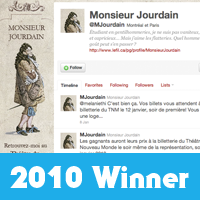 About Online Communities:
About Online Communities:Online communities congregate around a shared interest that can be spread across multiple channels (Facebook, Twitter, YouTube, etc). They can have different definitions and take different shapes, but they universally share some or all of the following characteristics:
- Content (articles, information, and news about a topic of interest to a group of people);
- Communication in a delayed fashion (using Forums or newsgroups and email);
- Instant Communication (Chat and instant messaging).
American online community researcher, Amy Jo Kim has developed an influential conceptual framework called Membership Life Cycle for thinking about the behavior and movement of members within online communities.
Use social Media to Cultivate Relationships:
Founder and editor of ArtsJournal, Douglass McClennan argues that "using social media as just an opportunity to sell tickets is a bad strategy, the electronic equivalent of junk mail (...) the idea is to cultivate relationships with an audience that is increasingly online." Many arts organisations have understood those principles and are using Facebook, YouTube and Twitter to create online communities, which have transformed their business models and attracted new audiences.
Moliere on Twitter (TNM):
 |
| Moliere on Twitter gained 1,000+ subscribers |
TNM's Campaign:
TNM offers classical theatre which may be seen as “old and corny by younger generations”. Pairing the traditional with the modern, TNM “became a symbol of modernity by making Twitter the hub of a viral communications strategy where the characters from Le Bourgeois Gentilhomme came to life on this social network: in 140 characters or less, Molière’s characters introduced themselves over a month to a new clientele by tweeting away frivolously in classical French verse.” ISMC.
presented by Lorraine Pintal TNM Artistic Director
The objectives were of creating excitement around the play, attracting a new clientele to classical theatre, learning to better take advantage of social networking and supporting the sale of tickets for the 24 shows. The play protagonists attracted a total of 1,045 subscribers on Twitter sending over 1,000 tweets. Primary and secondary visibility reached more than 660,000 people. Since Twitter usage is free, TNM invested in content generation rather than in media placement. Four sold out shows were added during the campaign. “The originality and never-seen-before character of the initiative had an impact extending Canada-wide in the Web media and the traditional press, equivalent to a placement campaign worth tens of thousands of dollars.”
Other Artistic Online Communities:
Other arts organisations had notable social media success, like the Anaheim Ballet, a small organisation, was able to create a 'More than Dance' video campaign on YouTube that attracted 10.8 million unique views and enabled them to become the #2 All Time Most Viewed Non-Profit. The 2012 JUNO Awards in Ottawa used Facebook to build a community around the JUNO Pianos installed in the city and there are many more examples.
 JUNO Pianos Impromptu Musicians On-line Community |
Success with Web 2.0 Depends on Understanding Human 1.0:
Francois Gossieaux, winner of the 2011 Best social Media Marketing Theory award, claims the success of Web 2.0 is better understood by understanding Human 1.0. Because in social media “People can now claim a share of voices that is equal or larger than that of companies, (…) people can once again behave the way they were hardwired to behave in business and commerce—tribally, humanly, and socially. (…) Social media is what has enabled the hardwired Human 1.0 behaviors to scale to levels never seen before in business. (...) We can form tribes again—except that this time our tribes will not be bound by geography and we can belong to multiple tribes at the same time.”
